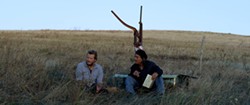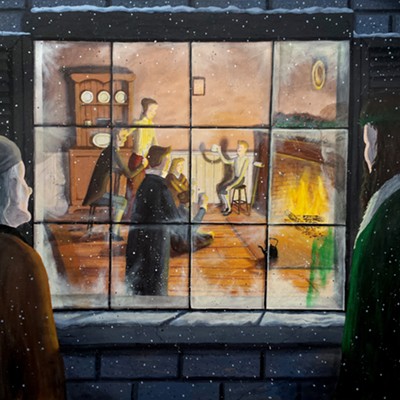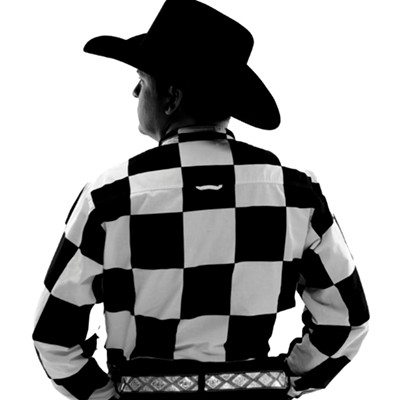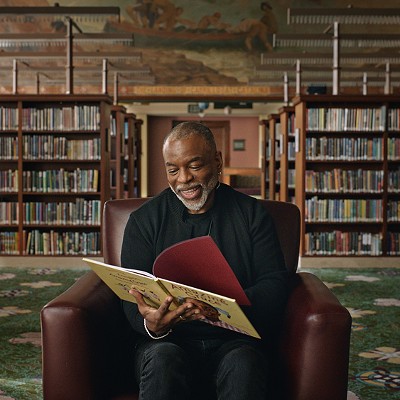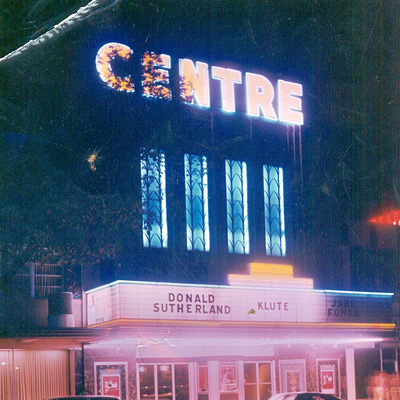Scottish director Steven Lewis Simpson’s 2016 film Neither Wolf Nor Dog can be used as a prime example of grassroots digital marketing.
The crowdfunded film was shot in just 18 days in South Dakota with a small cast and supporting crew of two. Simpson used a microscopic marketing budget (certainly by Hollywood standards) of less than $5 for Facebook ads and then premiered the movie in small towns rather than large cities. The strategy let to sold-out screenings, an 8.6/10 audience score on IMDB and a 96 percent rating on Rotten Tomatoes.
The film, adapted from the 1994 novel Neither Wolf Nor Dog: On Forgotten Roads with an Indian Elder by Kent Nerburn, is screening through at least July 6 at Harkins Theatres Bricktown 16, 150 E. Reno Ave. Additional screenings might be added later.
The story is about a white writer named Kent (portrayed by actor Christopher Sweeney) who is lured into rural South Dakota to write the memoir of an old and dying Native American elder named Dan (portrayed by David Bald Eagle, who died in July 2016). Dan’s friend Grover (Richard Ray Whitman) is pointed with the writer as he tries to get him to see their reality the way they do without falling prey to white guilt.
Whitman is a Yuchi-Muscogee Creek actor based in Oklahoma City. He has acted since the 1980s, appearing in War Party, American Indian Graffiti and Winter in the Blood. He also is a photographer and social activist. Whitman participated in the historic occupation of Wounded Knee, South Dakota, in 1973.
He recently spoke with Oklahoma Gazette about Neither Wolf Nor Dog and what it was like to return to Wounded Knee for the film.
Oklahoma Gazette: Are you excited for Neither Wolf Nor Dog’s Oklahoma premier?
Richard Ray Whitman: Yes, I am. The film has been making the rounds. It premiered last year in Edinburgh, Scotland, where the director and co-producer are from. The director, Steven Simpson, he’s managed to really promote the movie online and digitally. There’s pros and cons to that, but I know a lot of young independents are pushing it that way. If you wait and wait for a distributor, sometimes it never gets out there. They’ve really gotten good response on it.
OKG: How did you get involved with the film?
Whitman: It was a couple of years ago. Of course, the story comes from a series of books that came out in the ’90s by author Kent Nerburn. At the time, those books escaped me, but many of my friends — non-Indian and Indian alike — had read the books. They offered me the part, and I checked the book out of the library and read it.
OKG: What was it like shooting on location in South Dakota?
Whitman: I’ve made numerous trips there since the ’70s. I’ve worked with other independent filmmakers, and some are larger budgets, some are smaller. … We got to the point where the money just wasn’t totally there, so it was like, “We just have to shoot this film now.” The central character in the movie is the elder [Dave Bald Eagle], and when we filmed this he was 95 … and we shot it in 18 days. It was long days with minimal crew. I like working that way; there’s less of a pecking order.
OKG: What was the feeling like on set? Did you feel pressured to get it done?
Whitman: Yes. It was like three weeks. At the end of the days, we’d be like, “Wow! We knocked out three or four [script] pages today.” For me, I try not to focus on that. (Simpson) did have it roadmapped out and scheduled, … but I like that energy. There’s some pressure, like, “We have to try and bring this in,” you know?
OKG: David Bald Eagle seems perfectly cast for his role. What was he like on set?
Whitman: Well, he was 95, and we worked around his energy. I like working with a director who is open to saying, “Well, this is how we have it on script, but how do you see it?” In some scenes, Dave Bald Eagle would go off-script. He’s bilingual in the Sioux Lakota language and in the oral tradition, and his memory and his recall was beautiful. … In some ways, I didn’t look at him as an actor — he’s like this elder with this great history. He went into Hollywood as a stuntman. When they made films about Indians with one shot fired and 10 Indians hitting the ground — he did those kinds of films then worked his way up and got supporting roles.
OKG: It probably felt good to him going from films like that and being a stuntman in roles that probably weren’t very conscious of the way they portrayed Native Americans to a role like this.
Whitman: Oh yeah. He talked about that, even in his final days. He passed away last July at age 97. He would always tease us jokingly on set and say, “Well, boys, this might be my last film.” One winter, his health was bad so they had a special screening for him up in Rapid City [South Dakota] in the Black Hills Film Festival. … His family came, and it was a packed house. That was his sentiment, that there was finally some truism in how we are presented.
OKG: The climactic scene is filmed at Wounded Knee, which is a place you have some history in. What was it like filming there?
Whitman: When they did the special screening for Dave in South Dakota, they did a Q&A. A question came from the audience about filming on a burial site — a mass grave. The question was whether this was a violation of some kind of sacredness. He … assured her that it’s not a movie set — it’s not a site that we just recklessly go to or just a backdrop that we drove by and said, “Wow! What a lovely location.” He took the question well, and it was informative. He said, “The people who were massacred there — the families, children and women — were my descendents.” It wasn’t like we just rolled in there and set the camera and tripods up, nothing like that. In the film, there are offerings. … It’s not just a tourist stop. It’s spiritual and a powerful place.
Print headline: Dog tale, OKC actor Richard Ray Whitman stars in a small indie film making a big impact.

